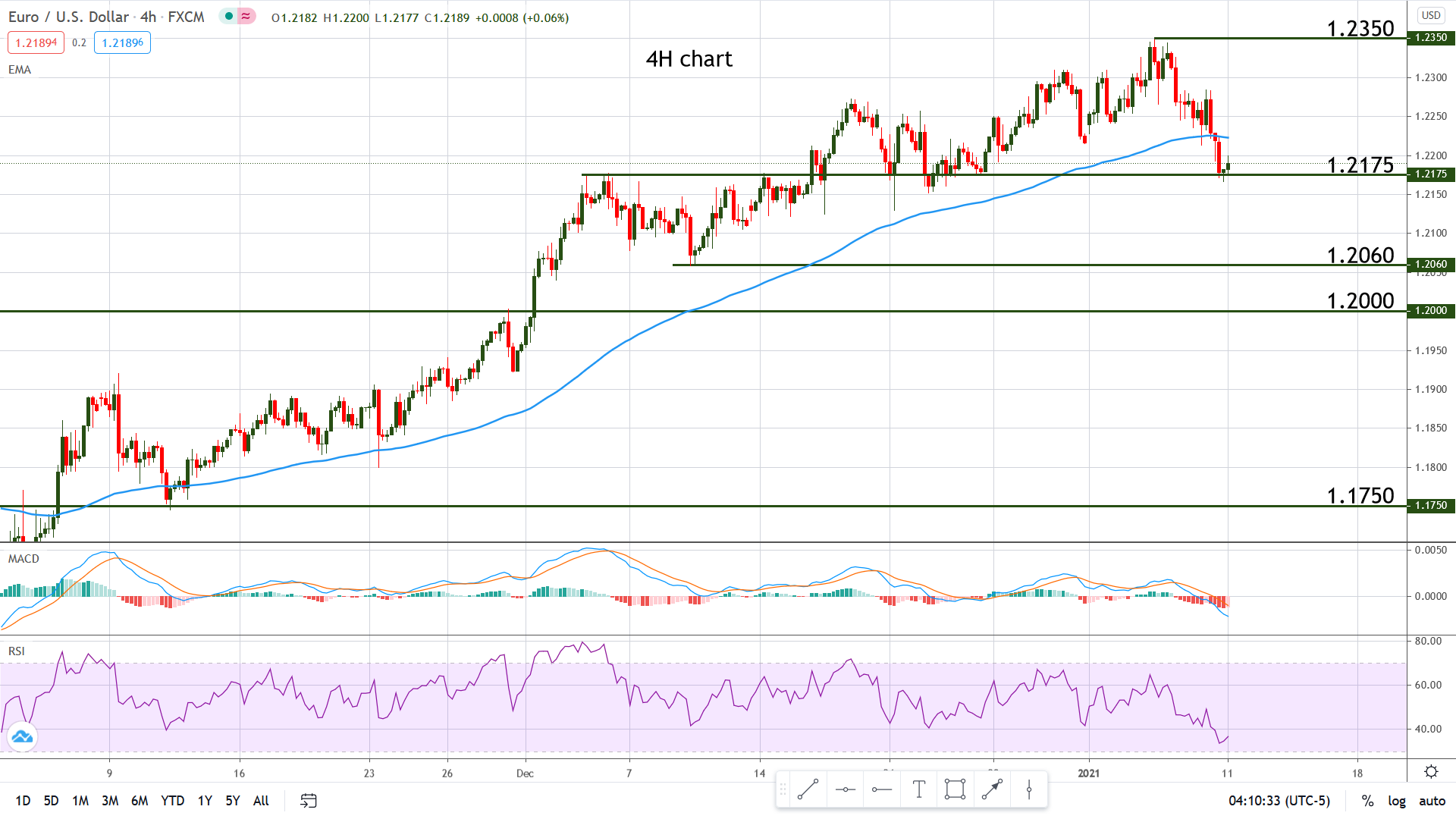Euro Starts the Week Under Pressure
Is the Greenback Staging a Comeback?
Rising U.S. bond yields have boosted the US Dollar, which in turn triggered bearish price action for EUR/USD starting last week and continuing through the beginning of the current one. At the time of writing, the yield on the 10-year government bonds is 1.11%, which may lead to additional gains for the US Dollar and thus additional downside for pairs with USD as a quote currency.
This week’s price action will continue to be affected by news related to the Capitol Hill riots, but also by any new developments in the COVID-19 vaccination process, which at this time is sluggish, as only about 2% of Americans have received the first shot. In Europe, things are not looking any brighter, as the ratio is below 1% in most countries. Apart from this, traders will have to keep an eye on U.S. inflation and retail sales data that will also have an impact on the greenback’s movement.
Key Events for the Week Ahead
The first two days of the week are somewhat lackluster, without any major events or releases on the schedule. The action picks up Wednesday, January 13 with the release of the U.S. Consumer Price Index (CPI) scheduled at 1:30 pm GMT. The indicator shows changes in the price of a basket of services and goods and acts as a gauge of inflation, which in turn is crucial for currency valuation (rising inflation may determine the central bank to increase interest rates). The projection is a 0.4% change (previous 0.2%); usually, numbers above forecast strengthen the currency.
Thursday, January 14 at 5:30 pm GMT, Fed Chair Powell will speak at a webinar hosted by Princeton University. Although this is not guaranteed to be a market mover, audience questions are expected, thus caution should be used.
Friday, January 15 at 1:30 pm GMT the U.S. Retail Sales and Core Retail Sales will be released and expected to show changes of 0.0% and -0.1% respectively. The Core version excludes automobiles from the calculation but both versions usually have a notable impact on the US Dollar because sales made at retail levels represent a major part of the overall economic activity.
Chart Analysis – EUR/USD
Currently trading at 1.2170, the pair is struggling to break away from the support located around 1.2175. Price is coming off highs at 1.2350 and has moved below the 100 periods EMA (on a 4-hour chart), a behavior which indicates that further downside is possible.
The RSI is moving south, close to its 30 level but without being oversold, which supports the idea of an extended drop, assuming that the current support is broken. The next target for the bears is the support located at 1.2060 but keep an eye on 1.2100 which is a big round number and may trigger a pause or even a bounce higher. For the time being, the bias remains bearish, at least as long as price is trading below the 100 EMA.
